Johannesburg – 28 March 2018: In a technology-focused partnership that will help make mines safer and more productive, the Wits Mining Institute (WMI) at the University of the Witwatersrand and leading mining company Sibanye-Stillwater have launched the Sibanye-Stillwater Digital Mining Laboratory (DigiMine).
DigiMine is a simulated mining environment in the Chamber of Mines building on the West Campus of Wits University, whose facilities now include a vertical shaft in a stairwell, a tunnel and stope in the basement, and a range of communication and digital systems to enable research that will create the mine of the future.
With a total investment of R27,5 million from Sibanye-Stillwater between 2015 and 2020, Wits University is supporting students, strategic projects and growing the DigiMine programme, which leverages a growing range of on-site facilities with multi-disciplinary research that draws on expertise from other departments at Wits University, and from partners locally and abroad.
Sibanye-Stillwater CEO, Neal Froneman, highlighted the importance of the mining industry harnessing the fourth industrial revolution and fully benefitting from advances in digital technology through close ties with research institutions. He remarked, “the launch of DigiMine establishes a unique programme that is instrumental for the application of digital technologies in support of safer and more efficient mining operations.”
This sentiment was echoed by Professor Tawana Kupe, Wits Acting Vice-Chancellor and Principal: “The DigiMine speaks to the University’s strategy of integrating technology, teaching, learning and research in academia. This development ensures that that we can continue to develop specialised skills and knowledge as we move into the fourth industrial revolution.”
“This partnership between WMI and Sibanye-Stillwater paves the way to develop digital technologies that will reduce risk in the mining environment,” said WMI director Professor Fred Cawood. “Safety and competitiveness are cornerstones of a sustainable mining sector, which can contribute to the National Development Plan by reducing poverty and inequality.”
DigiMine will also host the Chair in Digital Mining and Mine Automation, which will advance digital innovation relating to the mining industry as part of a larger Wits initiative to establish Wits and Braamfontein as a digital innovation precinct.
“Our exciting research agenda already includes projects on systems for underground communication, risk-monitoring, positioning and navigation similar to what is achieved above ground with GPS – as well as automated abnormality-detection to manage mining risks,” said Professor Cawood. “Our interventions will explore any innovations that can apply real-time digital solutions for reducing mining risk and increasing mining efficiency.”
As a Wits flagship programme dealing with Mining 4.0 and its Future World of Work initiative, DigiMine will conduct testing, research and development to transfer surface digital technologies to underground operations. It will also be providing the skills required to operate technology-intensive mining operations of the 21st century; this will include developing a modern skills-set for mines at the level of artisans, technicians and professionals.
“Our DigiMine programme fills a vital role alongside the other complementary divisions within the WMI – the Centre for Sustainability in Mining and Industry (CSMI) and the Centre for Mechanised Mining Systems (CMMS),” he said.
Some world-first initiatives currently underway include visual integration of mining technology systems, multi-purpose WSN systems for real-time communication and positioning, and underground remote-sensing through UAV and scanning applications.
In a week-long programme to celebrate the launch of the DigiMine, a two-day seminar showcased the work of some postgraduate research students and partner organisations, while keynotes on the digital mining theme were delivered by Sibanye-Stillwater and the National University of Sciences and Technology (NUST) in Pakistan.

Wits DigiMine life size mining stope panel
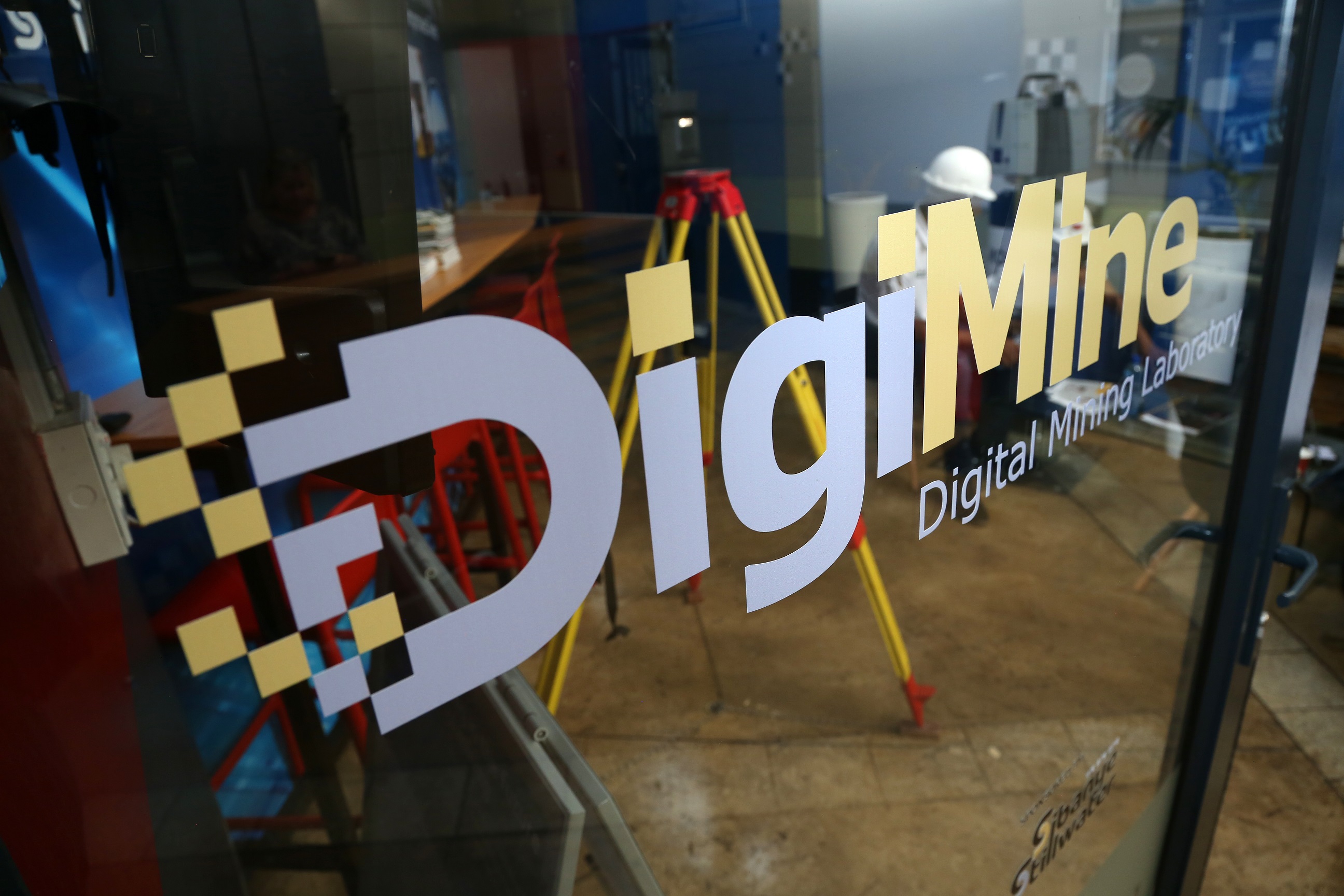
Wits DigiMine Entrance closeup
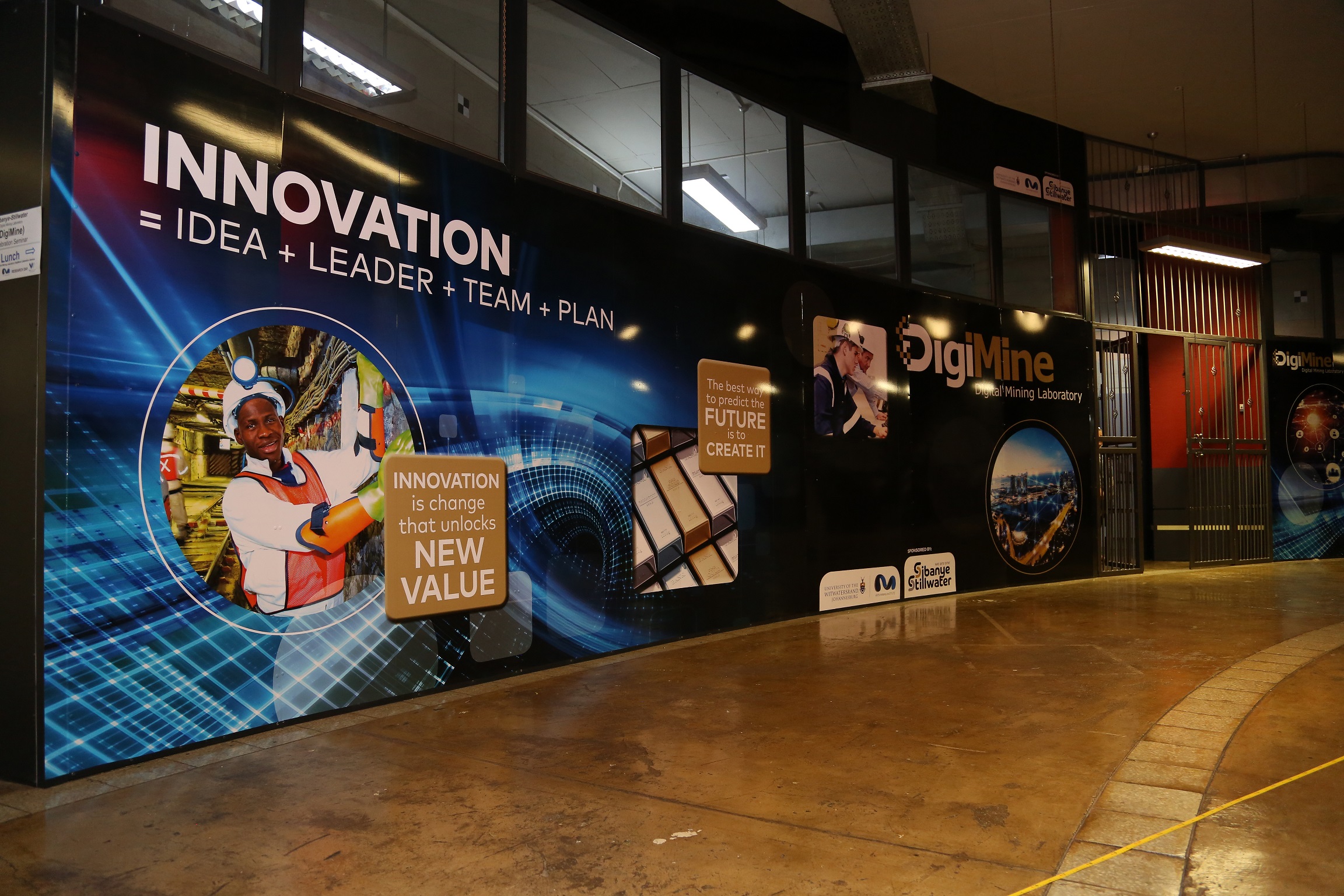
Wits DigiMine Corridor
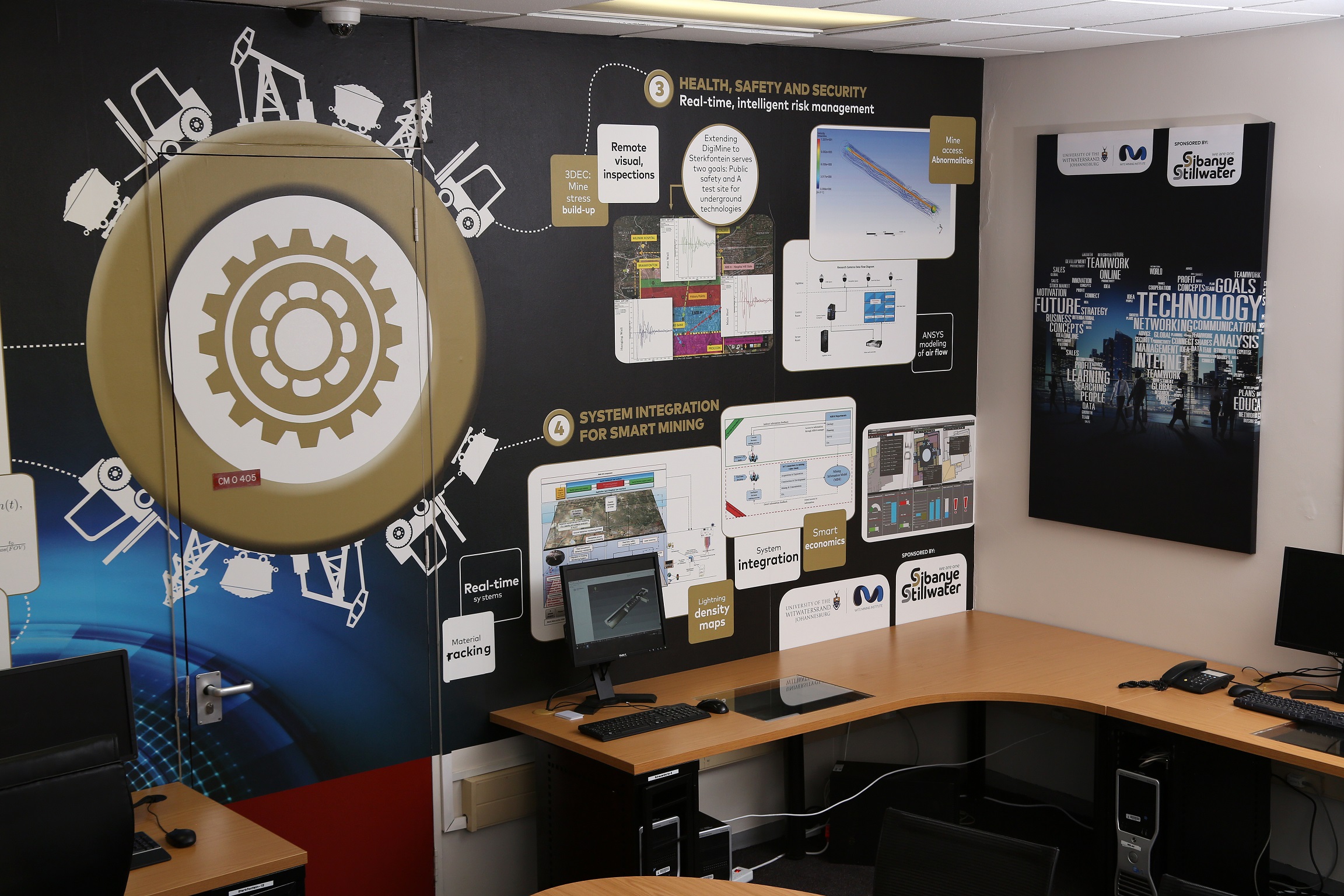
Wits DigiMine Control room
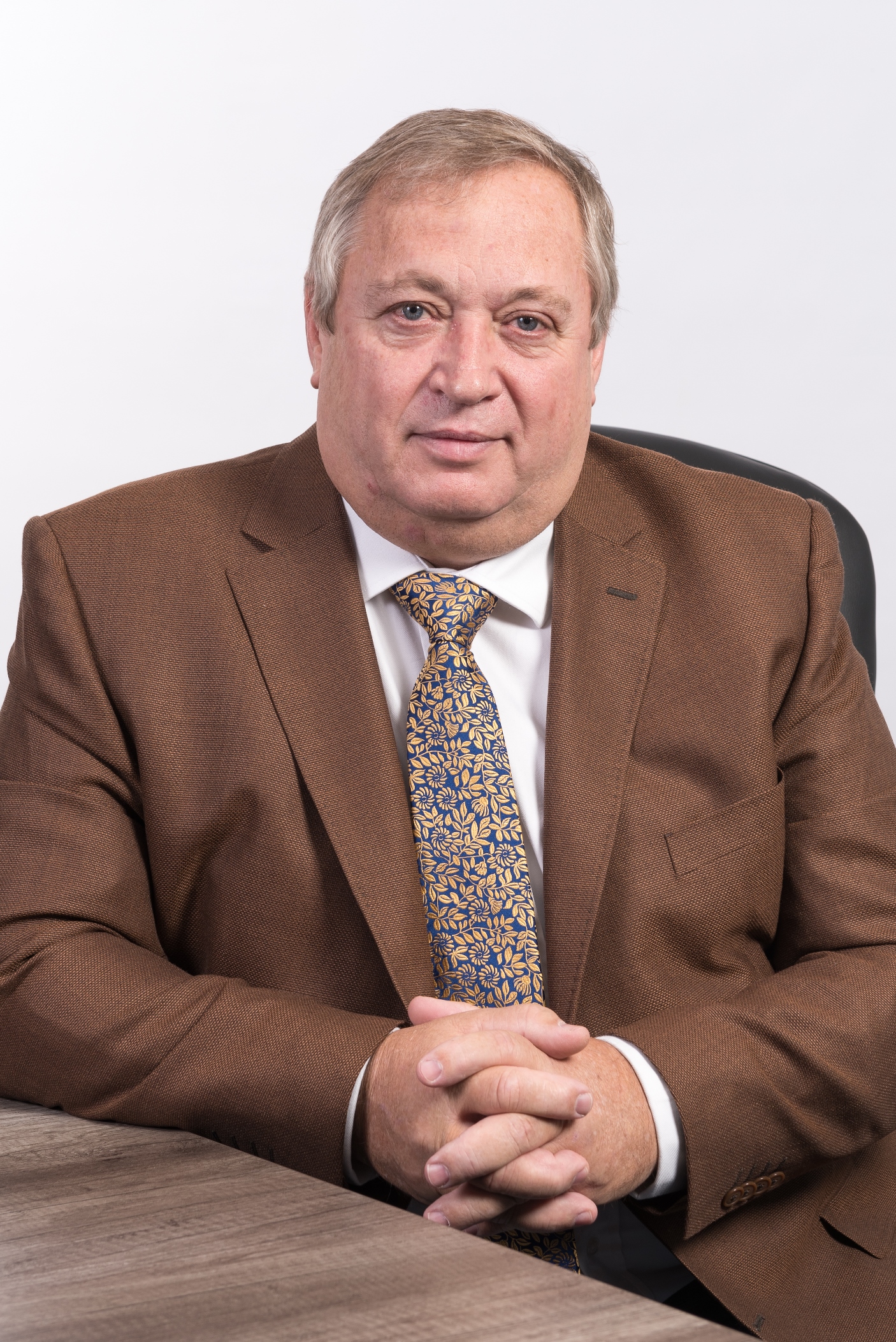
Neal Froneman executive director and CEO Sibanye-Stillwater
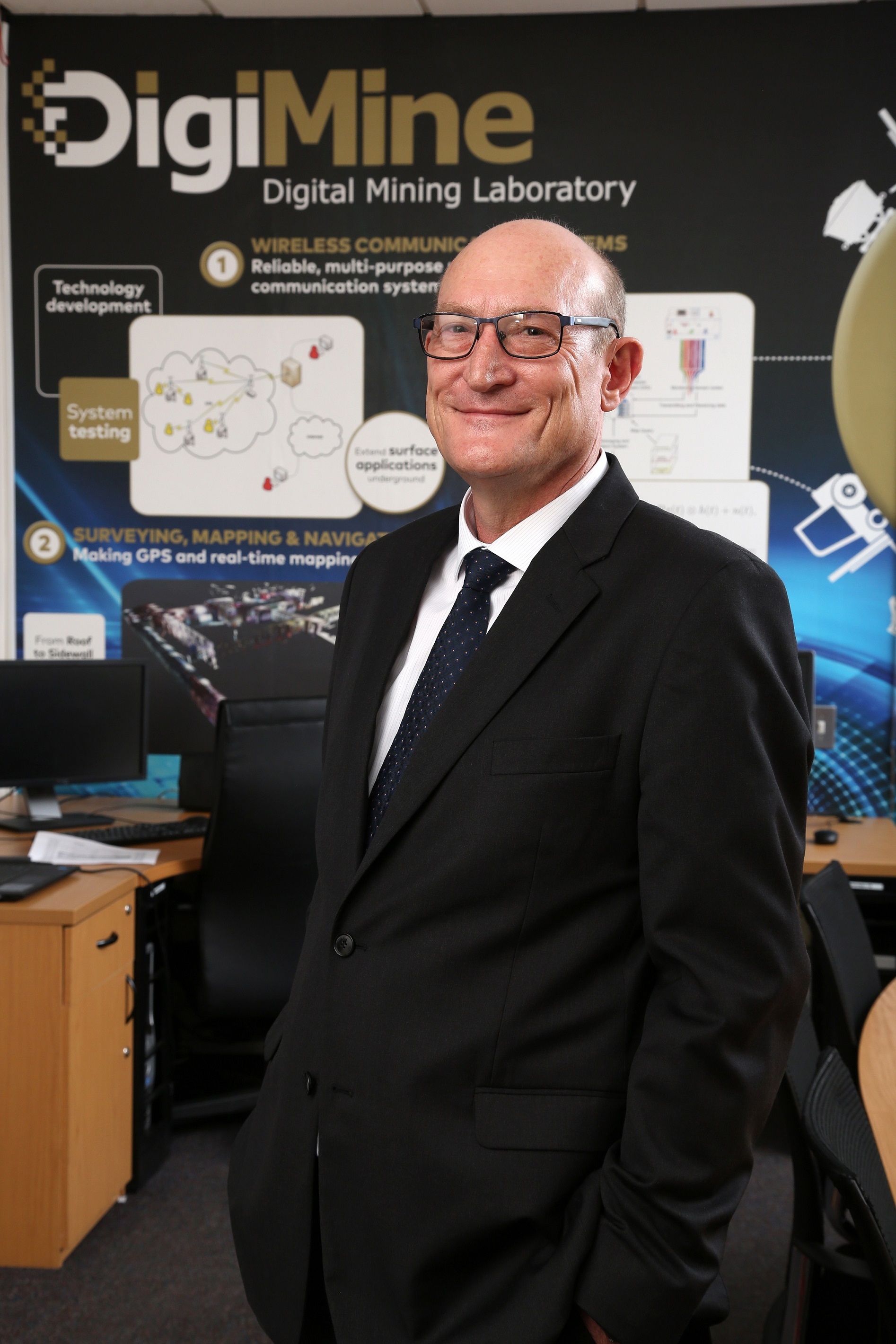
Prof Fred Cawood -Director of the Wits Mining Institute and Coordinator of the Wits DigiMine Project
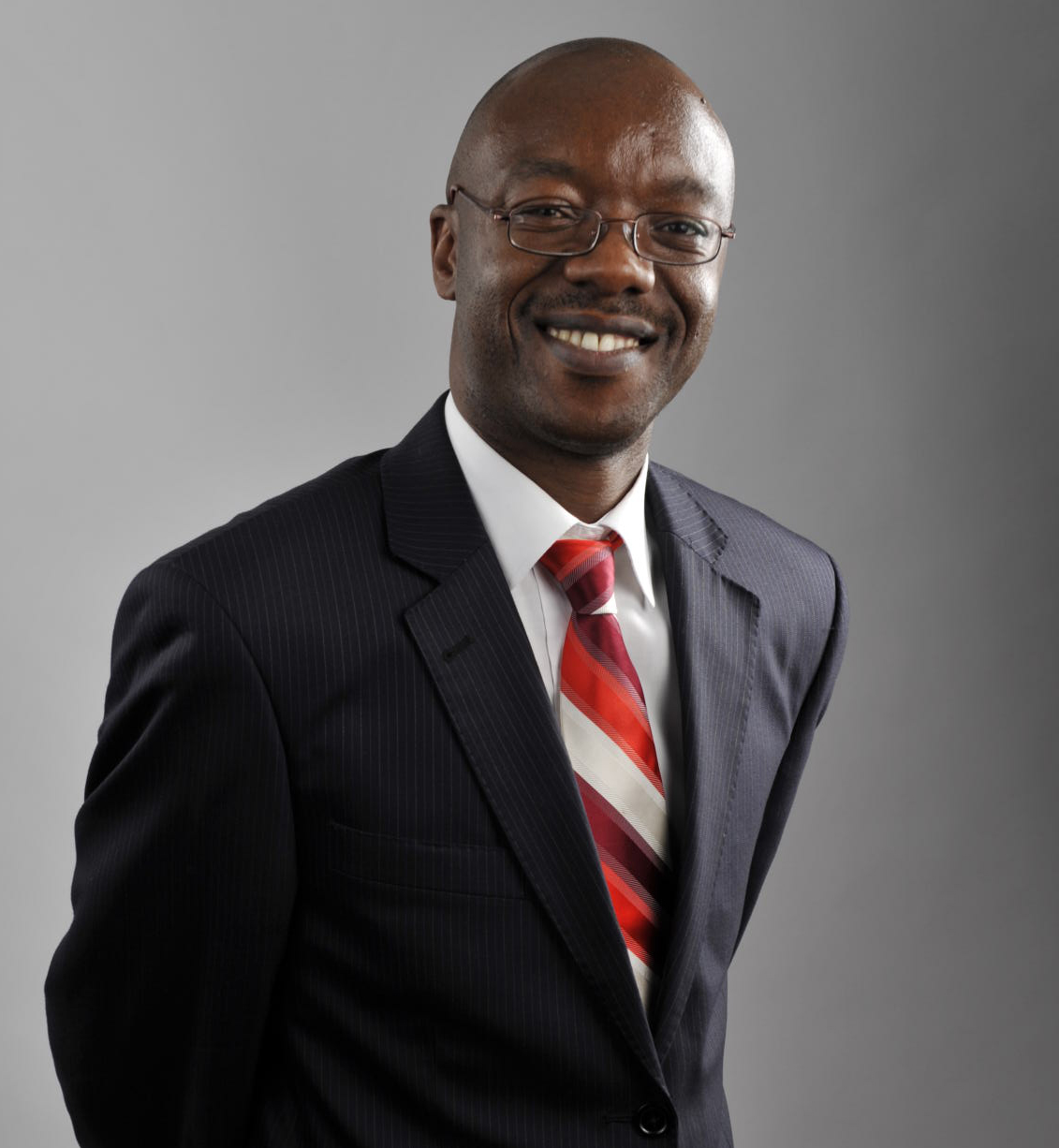
Professor Tawana Kupe – Acting Vice Chancellor and Principal of the University of the Witwatersrand 1 March – August 2018